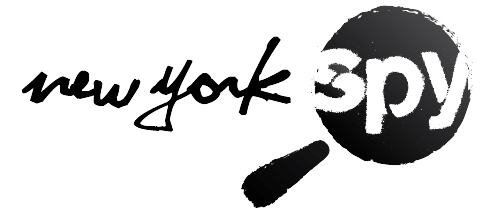

X-Ray of Brazil: The Art of Steve Miller
by Miriam Spritzer • Aug 5, 2013
Renowned artist from New York, Steve Miller is a pioneer in using the computer in art. Curious to unravel the functioning of all, he adopted the X-ray machine as new artistic language: since 1993 photography and X-ray slides are seen in his work. Miller customizes images, creating an abstract result. His most recent work is called Health of the Planet and involves the Amazon Rainforest in creating prints that will be used by the Brazilian brand Osklen collection in 2013. In New York, Steve Miller spoke with Miriam Spritzer.

Steve Miller
In a Portuguese almost as Brazilian as mine, Miller says he wanted to do a medical check up on the Amazon. The idea was to show to the world the different species of animals and plants of the region, in a more artistic and unusual way – hence the use of X-ray. The prints were so interesting and beautiful that it didn’t take long before Osklen wanted to incorporate it to it’s collection.
How did you end up in Brazil?
I first went to Brazil in 2005, along with other artists, we were invited by Nessia Leonzini (Pope), a Brazilian curator living in NY. She was putting together an affordable art fair – I contributed with a piece that was the X-ray of a foot kicking a soccer ball. During this trip I went to Rio, São Paulo and Salvador. I had the wish to spend more time in the country, but would have to have some idea to work in Brazil. Then at Ilha Grande I came across a jackfruit. I was so impressed! I have never seen anything like this before. So I started to wonder what would be inside of it and thought it would be cool to do an x-ray of this fruit. Then I decided that if the Amazon are the lungs of the world, as many say, I would make a medical check up in Brazil with an X-ray in his lung.
Tell us a little bit about the backstage of your work in Brasil.
The project had two phases. I started in São Paulo, making images of plants. Then moved to Pará, to do the work with the animals. I had lots of help from local artists and the people who worked in hospitals, producing the x-ray images. Generally we started at 6 pm and finished up the X-rays by dawn. We also did remote sensing image with a satellite of the Amazon Basin, for example.
Was there any cultural shock with the Brazilian culture?
For sure! We saw exactly what Brazil really is. In São Paulo things were fast, but it took three years for me to get the whole structure set in Belém do Pará, it was where I needed a larger structure – a zoo and a hospital. The radiologist Otávio Lobo was extremely important for the implementation of the project and was responsible for the best radiology center I have ever seen. Also I had the help of a student of mine, the Brazilian, Fabricio Branda. But it was very complicated to make it all happen, both by cultural differences and by language. Two examples: The first time I arranged with the zoo’s director, he did not show up at the appointed time (with time I learned that it is a little part of Brazilian culture). And, on the other hand, although Otávio only have an appointment at the hotel, he gave us a real tour of the city, took us to dinner, introduced us to people. Anyway, it was the definition of Brazilian hospitality.

Steve Miller for Osklen
How did you choose what you were going to X-ray?
Besides the typical animals of the Amazon – Alligator, piranhas, sloths and anteaters – I chose everything I thought interesting or curious, or that could create a good image. The jackfruit ended up being very similar to the human lung, for example. On the public market of Belem, we bought all kinds of fish. And the zoo we had the help of a veterinarian to select the animals and also plan how to get them.
What did you find most impressive during this work in Brasil?
The size of the flower market in São Paulo. It is gigantic! Furthermore, the amount of different species that could be found there or at the Belém Zoo. We did a boat trip on the Amazon River, and that feeling of being inside the forest is inexplicable. I admit too that really wanted to take an anteater home, they are cutest things, but of course it is not possible. On the negative side, I was very surprised at the lack of structure in some places: the zoo of Belém did not have any kind of documentation about the animals, much less X-ray machines for their health.
How did the partnership with Osklen begin?
I already knew Osklen for a while, used to always buy something there when I went to Brazil. When I had the idea for the project I thought it would be interesting to have these images in shirts and shorts, and even more because the company has the approach to be socially responsible. By chance I met Oskar Metsavaht at Brazil Foundation gala we were introduced and I did not know that he was the designer brand. We talked and he told me he had recently gone to Belém in search of fabrics for clothing. It was then that I discovered that he was the Osklen’s Oskar! So I said: “I have a great idea for you”. And so the partnership happened.
